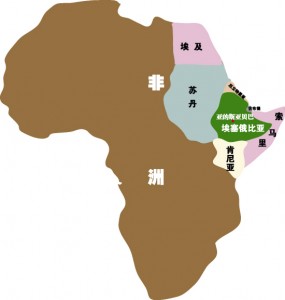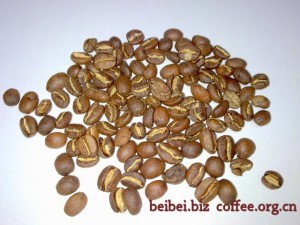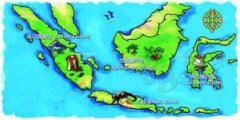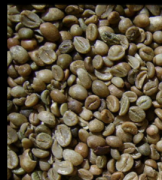Coffee hometown Ethiopia lemon-flavored queen Yega Xuefei coffee beans
Yega Xuefei from: Ethiopia

Yirga cheffe is a small town in Ethiopia, 1700-2100 meters above sea level, and it is also synonymous with Ethiopian boutique coffee. Since ancient times, it is a wetland. The ancient saying "Yega" yirga means "settle down", and "Xuefei" cheffe means "wetland". Therefore, Yejasuefi means "Let's settle down in this wetland". Strictly speaking, Yega Xuefei is a by-product area of Ethiopia's Sidamo Sidamo province, located northwest of Sidamo, along the mountain with paste, is one of the highest coffee-producing areas in Ethiopia. However, the mode of production and flavor here are so outstanding that Ethiopian coffee farmers compete to be proud of the flavor of their coffee, so they are independent from Sidamo and become the most famous producing area in Africa. At first, Yejassefi's coffee trees were planted by European monks (a bit like Belgian monks growing wheat to brew beer), and later by farmers or cooperatives. Yejia Chuefei is actually constructed by surrounding coffee communities or cooperatives, including Edido Idido, Hafusa Harfusa, Hama Hama and Biloya near Fog Valley Misty valley, all washed with water, but there are also a small number of off-product beans engraved with sun to enhance the charming fruit aroma and mellow thickness. These mountain villages are foggy, like spring all year round, with a gentle breeze in summer, cool but not hot, rain but not damp, and no cold damage in winter, giving birth to a unique regional flavor of citrus and flowers. Coffee trees are mostly planted in farmers' own backyard or mixed with other crops in the field, the yield per household is not much, it is a typical rural coffee. Yega Xuefei won the prize beans almost from the above-mentioned coffee villages and communities. The so-called "Yega Chuefei" refers to the strong aromas of jasmine, lemon or lime acid, as well as peach, almond or tea. On the other hand, the smell of blueberries is particularly prominent this season, and the room is full of blueberries after grinding. The phrase "coffee entrance, flowers in full bloom" is best described, just as flowers promote the comfort of taste buds and olfactory cells in the nasal cavity. In addition to the fragrance of flowers, the delicate thickness of body, like silk massage in the mouth, feels wonderful. At present, many coffee chemists begin to study the microclimate and soil and water around Yega Xuefei, in order to sum up the planting equation of fine coffee. Yega Xuefei is divided into two categories according to the different ways of handling raw coffee beans: category An is washed, and the grade standard is set by the American Fine Coffee Society SCAA, which is divided into Gr-1;Gr-2. The smaller the Arabic numeral is, the higher the grade is. The style of G1 Yega Chuefei is distinct, and the flavor of citrus and floral flavor in the coffee liquid is irresistible to everyone. Category B is the sun-treated raw coffee beans, and the grade is Gr-1. Gr-3;Gr-4;Gr-5, also the highest grade of G1 sun Yega Sheffield, is fruity. Opening the freshly roasted G1 Sun Yega Chevy coffee bag can subvert people's original understanding of coffee. Only those who have tasted the highest grade sun Yega Sheffield will believe that coffee is a kind of fruit. Yega Xuefei brewing method: the water temperature, 85 to 90 degrees Celsius is better. Yejia Chuefei is sour and bitter, and there is still a little sweetness in the mouth after drinking it. Philharmonic pressure on the powder thickness requirements are not high, fine powder and high water temperature bubble time is shorter, powder coarse and water temperature low bubble time is longer, but 1 to 2 minutes is enough. The ratio of powder to water ranges from 1:12 to 1:18, everyone has different preferences, just find out what you like, not what others say is right for you. If you are not used to the bitterness of coffee at first, you can first add sugar or coffee companion, and then reduce it day by day to adapt to black coffee, usually for a week. Yega Xuefei coffee beans are roasted moderately and lightly, and good coffee beans should not be roasted deeply and retain more natural features; but since they have been roasted, physical and chemical reactions have taken place in the high temperature, what can be preserved when they are 200 degrees Celsius? it is probably also the imagination of coffee beans after roasting.

Important Notice :
前街咖啡 FrontStreet Coffee has moved to new addredd:
FrontStreet Coffee Address: 315,Donghua East Road,GuangZhou
Tel:020 38364473
- Prev

Sumatra Gift Indonesia Manning Coffee beans
Most of the boutique coffee is named after the producing area, region or port, while Manning is named after the nation. It is a phonetic mistranslation of the Mandainin people in Indonesia, and the origin of the name is a very interesting short story. Legend has it that during the Japanese occupation of Indonesia during World War II, a Japanese soldier drank a cup of mellow coffee in an Indonesian cafe. He asked the shopkeeper.
- Next

How do you cook coffee beans? Xiaobai knows 123 of the coffee world.
Frankly speaking, coffee beans can't be brewed, and frankly speaking, even though coffee was made many years ago, it was a long story, but a lot of literary or film works always use this verb (of course, not strictly speaking, brewing in a siphon pot is a kind of brewing), and it is brewing coffee beans, which really depresses the editor of the coffee shop for a long time.
Related
- Guji coffee producing area of Guji, Ethiopia: Humbela, Shakiso, Wulaga
- What is the most expensive variety of Qiloso in BOP multi-variety group?
- How to store the coffee beans bought home?
- Why are Yemeni coffee beans so rare now?
- Ethiopian Sidamo all Red Fruit Sun Sun Santa Vini Coffee beans
- SOE is mostly sour? What does it mean? Is it a single bean? what's the difference between it and Italian blending?
- Is Italian coffee beans suitable for making hand-brewed coffee?
- How to choose coffee beans when making cold coffee? What kind of coffee beans are suitable for making cold coffee?
- Just entered the pit to make coffee, what kind of coffee beans should be chosen?
- Can only Japan buy real Blue Mountain Coffee? What are authentic Jamaican Blue Mountain coffee beans?

